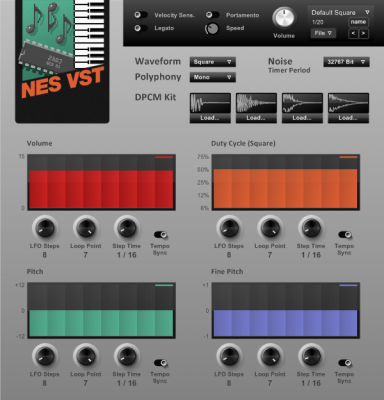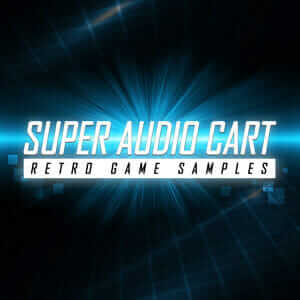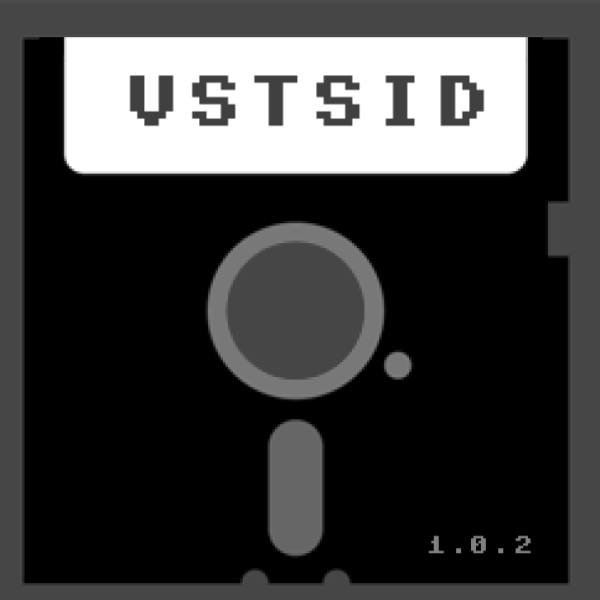
Looking for a cheap way to write 8-bit music? There are loads of free apps and plugins out there. But by far, Nintendo VST by Matt Montag is the best one I’ve found.
This review will go over the ins and outs of Nintendo VST. I’ll lay out the features, some pros & cons, and even show you demos I made with it.
One of the all-time greatest virtual instruments for creating 8-bit music. This plugin mimics the NES sound hardware and has an elegant design that's super easy to use. Best of all, it's 100% free!
What Is Nintendo VST?
Nintendo VST is a free software instrument for writing 8-bit and chiptune music. It’s an incredibly faithful recreation of the NES sound chip, down to the unique quirks of each sound channel.
You can use this plugin in almost any DAW that supports VSTs, such as Logic Pro, Cubase, and Cakewalk. It was created by an independent developer named Matt Montag.
NES VST lets you tweak and customize your sounds to create unique leads, basses, arpeggios, and more. It’s simple to use, yet incredibly powerful.
Despite the fact that it’s free, it’s easily one of the most inspiring and useful 8-bit plugins ever made. I’d go as far as to say it’s an essential VST for any chiptune composer.
Listen to Some Demos
Nintendo VST’s Features
On the surface, Montag’s instrument is pretty basic. But dig a little deeper and it has a surprisingly rich set of features. Let’s take a look.
3 Types of Waveforms
Like the original NES, the Nintendo VST can produce four types of sounds:
- Square Waves
- Triangle Waves
- Noise Waves
Square waves can be tweaked via the Duty Cycle editor. This effectively gives you five types of pulse waves to work with.
You can’t modify the triangle and noise sounds themselves. But you can change other parameters for other types of sound customization (more on that below).
DPCM Sample Kit
The NES could also play highly compressed samples, like the timpani from Super Mario 3’s Airship Theme.
Likewise, Nintendo VST can play four audio samples. These sounds are mapped to C4–F4.
It comes with four samples already. But you can replace them with any .wav file and customize your kit.
The DPCM kit is ideal for expanding your drum sounds. You can also get creative with loops and voice clips. Unfortunately, you can’t modify them any further within the VST itself.
Volume, Pitch, and Fine Pitch Adjustments

This is where the synth gets shockingly sophisticated.
Nintendo VST doesn’t have typical ADSR controls like most synths. Instead, you can edit certain parameters using the LFO steps (pictured above):
- Volume — Adjusts the volume (duh). You can change the attack, delay, and sustain of your notes, or create sounds that drop in and out.
- Pitch — Changes the diatonic pitch of the note you’re playing. Use it to create arps and sequences.
- Fine Pitch — Adjusts the tuning of your note. Use it to add vibrato to your notes.
On top of that, you can change the number and timing of LFO steps for each parameter.
Combine these settings with the Square Wave’s Duty Cycle editor, and you have unlimited sound possibilities. You can build unique leads, basses, pads, sequences, and other sound effects — the only limitation is your creativity.
Other Features
Some other features worth mentioning:
- Polyphony — Changes whether you can play several notes at a time (Poly) or just one (Mono).
- Legato — When this is turned on, LFO parameters don’t retrigger when changing notes. It’s especially helpful for certain step sequences.
- Portamento — Adds a little glissando between connected notes. You can also change the glissando’s speed.
- Noise Timer Period — Changes the noise channel’s sound characteristics.
- 32767 Bit has a more “white noise” quality to it.
- 93 Bit sounds more glitchy and dirty.
Nintendo VST Pros & Cons
Honestly, I have very few complaints. It’s such a fantastic instrument that stands up to other chiptune synths — even the ones that cost lots of money.
That said, there are some minor disappointments.
Let’s look at the pros and cons.
Pros:
- Authentic NES sound
- Powerful sound editing tools
- FREE!!!
Nintendo VST is carefully crafted to be as authentic as possible to the NES’s sound hardware. And it does that extremely well.
All the waveforms are accurate and have the same quirks as the original console. DPCM sounds have the same tasty crunch they had back in the day too.
And like I already mentioned, Nintendo VST has an incredible toolset for building almost any 8-bit sound you can dream about.
Did I mention it’s completely free?
Cons:
- Lacks some modern features
- DPCM sample channel is limited
While I shouldn’t complain about a free plugin, I’d say Nintendo VST is missing a few quality-of-life features.
For one, it would be nice to map some of the functions to the MOD wheel. And while you can automate them through MIDI, it’s not always practical.
DPCM samples are pretty limited too. You can only upload four at a time, and you can’t modify them within the plugin.
I get that these are all intentional limitations. But still, having a few modern features would go a long way.
Alternatives to Nintendo VST
Nintendo VST isn’t the only chiptune maker out there. We’ve found other tools that replicate sound chips from the NES and other 8-bit consoles. We talk about all these instruments (and more) in our article, The Best Chiptune Software For 8-Bit & 16-Bit Music.
-
$149Buy Now Read Our Review
Super Audio Cart includes sounds from 15 classic game consoles and computers spanning several decades. It's the most comprehensive library of retro game samples ever assembled.
We may earn a commission if you make a purchase, at no additional cost to you.
-
Free Download
Created by the Japanese chiptune band YMCK. This fantastic software instrument replicates the sound of the NES in all its 8-bit glory. It comes with a customizable display and additional tools for making authentic chiptune sounds.
-
Free Download Read Our Review
VSTSID mimics the Commodore 64's SID chip, delivering gritty-sounding pulse waves in all their lo-fi glory. It lets you easily perform the bubbly chiptune arps, and comes complete with envelope controls and other filter settings.
Final Thoughts: Should You Download Nintendo VST?
Whether you’re on a tight budget or not, Nintendo VST is an essential plugin for any and all chiptune composers. It faithfully recreates the NES sound, and has a wealth of features that put other synths like it to shame.
Learn How to Write 8-Bit Music
It’s one thing to write music with VST plugins. But it’s another thing to make it sound authentic to the era.
If you want your music to sound like it actually came from the NES, check out our guide on how to make 8-bit music. We go over tips, tricks, and tools for writing music in the style of the NES and other classic game consoles.



